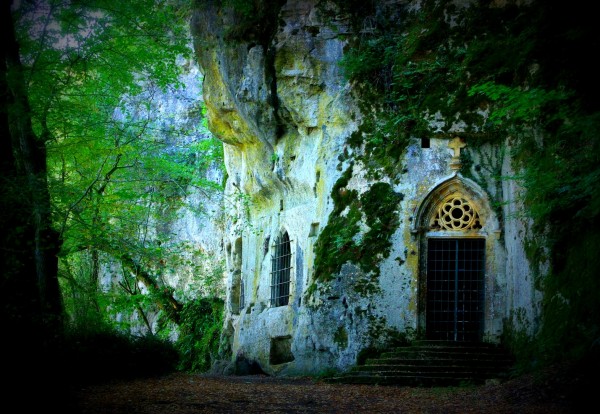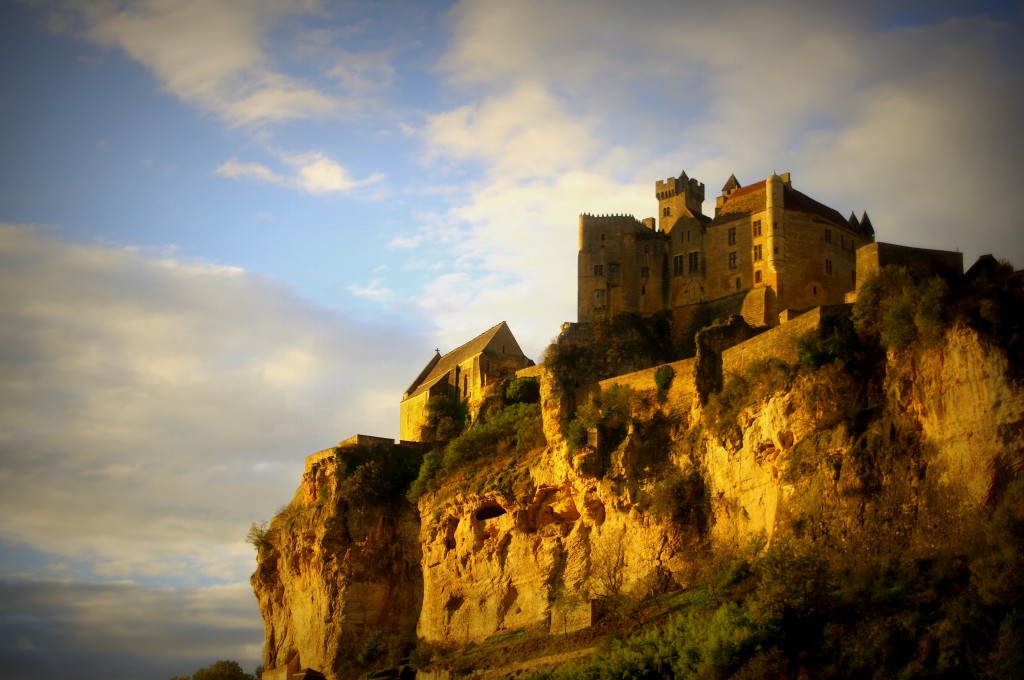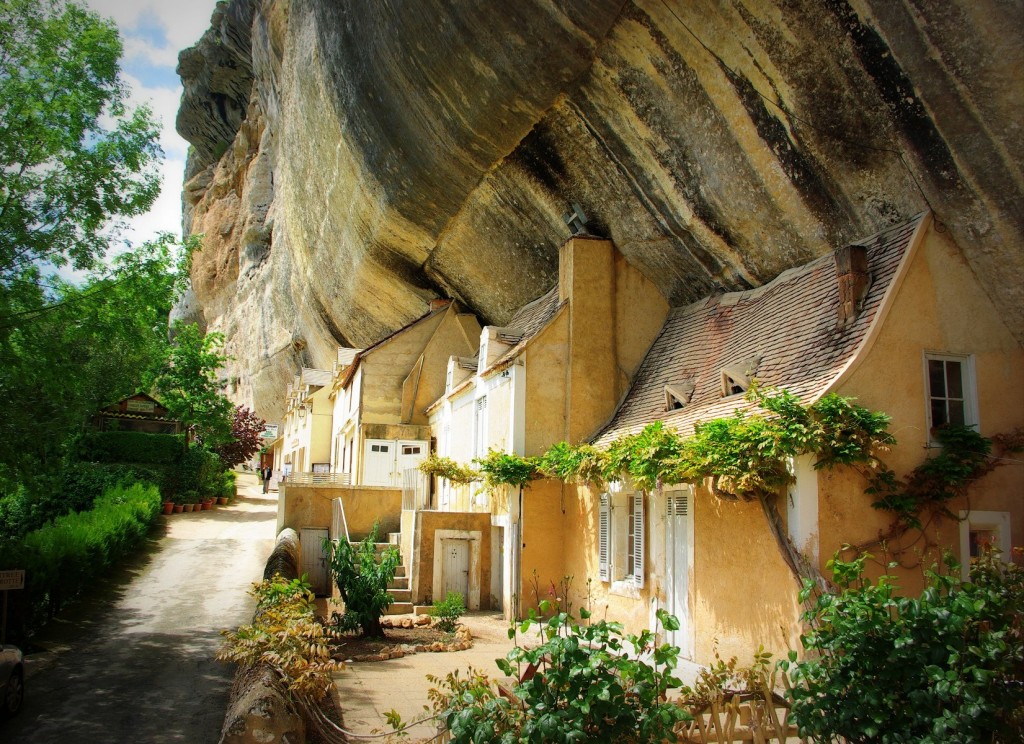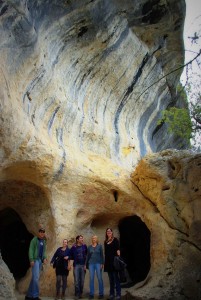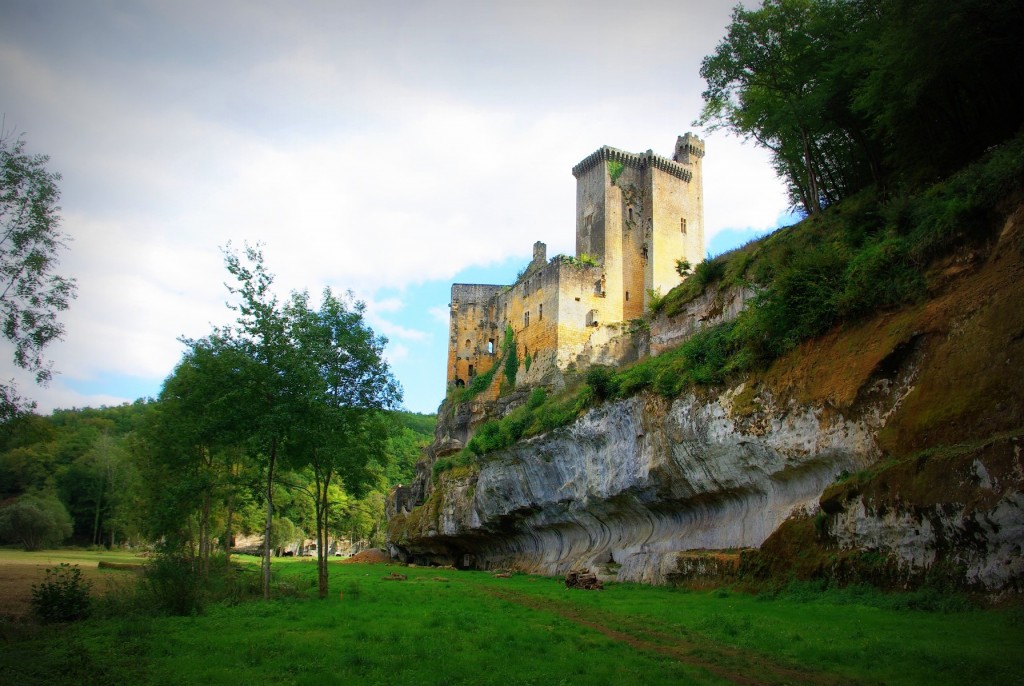Michela Thomann, our Lot and Dordogne Route Manager, tells us about her hometown of Les Eyzies and the surrounding prehistoric sites (which will be a part of your Classic Dordogne walking holiday or cycling holiday)
The Dordogne is a region overflowing with history, not only medieval history (which there is certainly no shortage of), but also history dating as far as back as the upper Palaeolithic times (Late Stone Age). As you travel through the region you will come across evidence of this everywhere. You will discover prehistoric troglodyte dwellings, some isolated in the middle of green oak forests; others re-appropriated and built upon by the medieval barons who seemed to have had a preference for erecting their imposing crag-top castles on prehistoric sites. Chateau de Beynac, Chateau Castelnaud and especially the Chateau de Commarque are prime examples.
But it is in Les Eyzies, also known as the ‘world capital of prehistory’, that you will be invariably confronted with our homo sapiens sapiens origins. Not only is it my hometown, but it is a place we are all in some way inextricably linked to. Apart from the village itself having been built on top of still visible prehistoric shelters, the buzzing little town is home to a host of interesting and interactive archaeological sites. These sites convey how our ancestors lived 12-35,000 years ago with some of the world’s finest sanctuaries of the upper-Palaeolithic era right in front of your hotel’s doorstep.
You can literally smell the improbable age of the place. Fifteen thousand years ago, human hands may have first touched the walls of the caves located around Les Eyzies, but the washed out limestone formations and the stalactites and stalagmites are a testimony to a very different time dimension – it took millions of years to create these natural wonders. It is a privilege, indeed, to be able to discover our prehistoric roots in their original settings, far away from any out-of-context museum environment with their inch-thick security glass and bright lights. These œuvres d’art were created in pitch-black darkness, with only natural torchlight at hand, throwing its flickering light onto the intriguing outgrowths on the cave walls.
You’ll discover that our ancestors used scaffolding to reach attractive painting spots up to 15 meters above ground level in the Font de Gaume cave, and that they were crawling on all fours to reach the furthest tucked away corners 400 meters from the entrance in the Combarelles cave. Furthermore, they used ingenious graphic techniques to render their artworks more alive. They knew how to make use of the natural concave and convex wall surfaces to add a third dimension to their masterpieces. A full horse’s belly here, a mammoth’s sunken waistline there – and the anatomical details of the bisons, horses, humans, deer, mammoths, bears, aurochs, lions and rhinoceros are simply astonishing and will leave you deeply humbled. And don’t forget to try to spot the two reindeers facing each other, one lovingly licking the forehead of its partner! This is one of many examples where the artists depict behaviour and movement with an impressive degree of realism.
If you are walking or cycling our Classic Dordogne route, Les Eyzies is a great place to spend an additional day or two at the end of your trip. You may need extra time if you want to enjoy the National Museum of Prehistory, the UNESCO sponsored Pole International de la Prehistoire (with its excellent free exhibitions), the flint-stone workshops, stalactite caves, the breathtaking troglodyte cities of La Roque St. Christophe and La Madeleine and, last but not least, the world-renowned and unique caves of ‘Font de Gaume’ (200 polychrome paintings), ‘Combarelles’ (800 engravings in a 400 meter long cave), or the lesser- known ‘Abri Cap Blanc’ (sculpted frieze in a rock overhang).
Les Eyzies, along with much of the Dordogne, is teeming with history, and exploring the area on foot allows one absorb it at your pace. This ‘Valley of Mankind’ has always been where I feel most at home, and the weight of history around me helps me get a real sense of place. I do wonder whether my ancestors 15,000 years ago felt the same draw….
If you enjoyed the above blog and are interested in learning a little more about the Dordogne do take a look at my previous blog ‘Paddling into History – The Dordogne River’.
If you are interested in travelling to the Dordogne and seeing the Prehistoric Caves of Les Eyzies take a look at the below walking and cycling holiday options:
Independent Walking and Cycling Holidays
Classic Dordogne (Footloose – Walking Holiday)
Classic Dordogne (Freewheeling – Cycling Holiday)
Escorted Walking Holidays
Classic Dordogne
The next departure is 19 – 26th September 2015























 2025 Tours For an overview of 2025 dates, click here Idyllically located in unspoilt countryside between Siena – ‘the best-preserved,
2025 Tours For an overview of 2025 dates, click here Idyllically located in unspoilt countryside between Siena – ‘the best-preserved,  The Via Francigena, or ‘Frankish Road’, was the main road from Rome via the Great St Bernard Pass to territories
The Via Francigena, or ‘Frankish Road’, was the main road from Rome via the Great St Bernard Pass to territories 